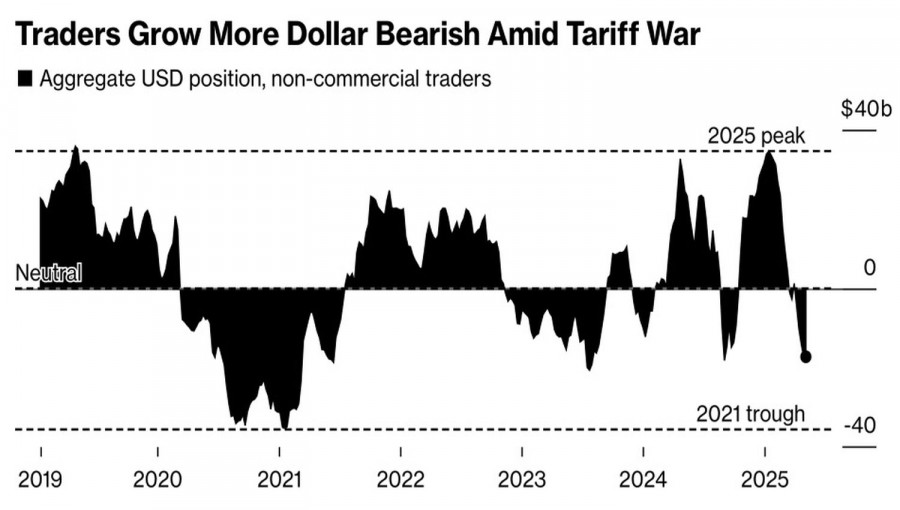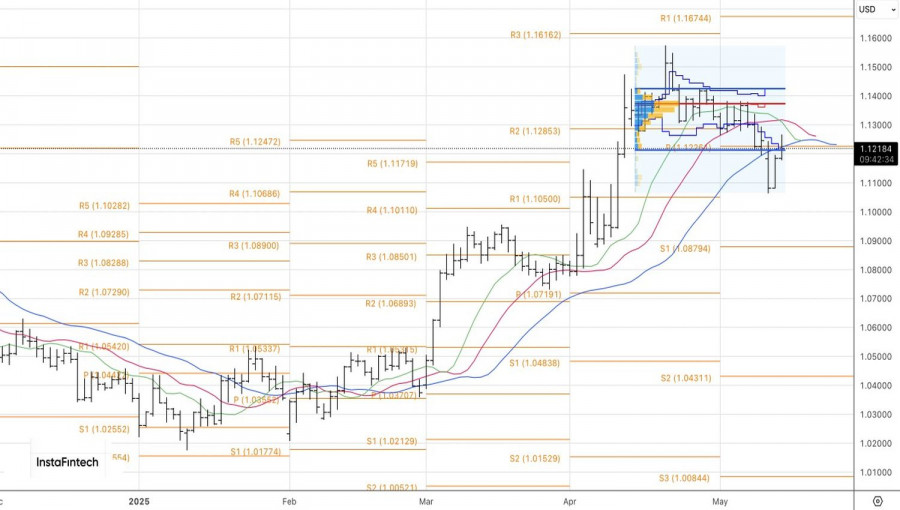See also


 15.05.2025 12:38 AM
15.05.2025 12:38 AMRumors are swirling. The sharp rally in the South Korean won has sparked speculation that Washington is pressuring its trade partners to strengthen their currencies. Donald Trump has repeatedly stated that competitive devaluations by other countries hurt U.S. exports and widen the U.S. trade deficit. In this context, Bloomberg's insider report about discussions on currency policy during U.S.–South Korea negotiations sent shockwaves through the Forex market.
Following the 90-day tariff truce and Trump's invitation to trade partners to strike deals, markets began to assume that the U.S. administration would demand increased purchases of American goods and stronger foreign currencies against the dollar. These are the mechanisms by which the U.S. can boost exports and reduce its trade deficit. After discussions between Washington and Tokyo, the speculation died down—but it returned with new force midway through May, likely triggered by the recent rally in the U.S. dollar index. It's doubtful that the Republican president is as pleased with the dollar's surge as he is with the S&P 500's 17% climb from its April lows.
Essentially, the White House is pursuing two opposing goals. It wants new record highs for the S&P 500 while simultaneously seeking to weaken the greenback. The issue is that the S&P 500 and the U.S. dollar have been moving in the same direction lately. The root of the problem lies in the alternating popularity of "sell America" and "buy America" strategies, which dictate capital flows between North America and Europe.
The U.S. dollar's challenge stems from asset managers increasingly diversifying their portfolios into non-U.S. securities. For decades, money flowed into the U.S., but Trump's return to the White House and Germany's fiscal stimulus programs have turned the tables. Trillions of dollars may now head to the EU, making bearish positions on EUR/USD increasingly risky.
Even the Federal Reserve's reluctance to cut interest rates doesn't help in this environment. Futures markets now price in only two rate cuts by the end of 2025, down from three. And this is happening amid slowing inflation! In reality, easing tensions in the U.S.–China trade conflict has lowered the risks of a recession, allowing the Fed to maintain its pause, no matter how often Trump criticizes Jerome Powell.
Add to this the S&P 500's vulnerability to a pullback after its impressive 17% rally, and everything falls into place. Selling the dollar is entirely justified.
Technically, on the daily chart of EUR/USD, bulls are trying to return the pair to the fair-value range of 1.122–1.142. If successful, traders may seize the opportunity to open long positions in hopes of a renewed uptrend. Conversely, failure to reclaim this zone will create a chance to build on existing shorts opened from 1.128 in the major currency pair.
You have already liked this post today
*The market analysis posted here is meant to increase your awareness, but not to give instructions to make a trade.
Analysis of Macroeconomic Reports: A fairly large number of macroeconomic publications are scheduled for Friday, but most of them will not interest traders. For example, the report on industrial production
Graphical patterns
indicator.
Notices things
you never will!
E-mail/SMS
notifications

Your IP address shows that you are currently located in the USA. If you are a resident of the United States, you are prohibited from using the services of InstaFintech Group including online trading, online transfers, deposit/withdrawal of funds, etc.
If you think you are seeing this message by mistake and your location is not the US, kindly proceed to the website. Otherwise, you must leave the website in order to comply with government restrictions.
Why does your IP address show your location as the USA?
Please confirm whether you are a US resident or not by clicking the relevant button below. If you choose the wrong option, being a US resident, you will not be able to open an account with InstaTrade anyway.
We are sorry for any inconvenience caused by this message.


